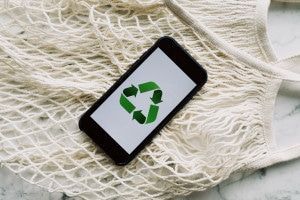10 Ways to Reduce Your Business’ Carbon Footprint

As a business owner, sometimes it’s easy to get carried away trying to increase sales and profits. In fact, it’s so easy that you miss the opportunity to go green. Going green as a business essentially involves reducing the amount of carbon dioxide produced in your office, and it’s actually great because it helps the environment while saving you money.
Additionally, it ensures that consumers view you in a whole new light as (an environmentally friendly company) which can in turn, positively affect your customer loyalty and sales. To get you started on the right path to going green, here are 10 ways to reduce your business’ carbon footprint.
- Recycle your waste
In an office environment, it’s is not uncommon to regularly produce a significant amount of waste, especially when there’s a lot of employees in the mix. One way your business can reduce its carbon footprint is by taking up recycling . Simply placing several recycle bins for specific types of material (eg plastic, paper, glass, and metal) around the office, will encourage your employees to recycle some certain materials instead of throwing them in the actual trash.
- Switch off appliances
Here’s a very simple way for your business to reduce its carbon footprint, switch off appliances at the end of the day. Most times in offices, you’ll find that people forget to switch off computers, printers, and other devices before closing for the day. By enforcing a policy that requires every employee to switch off appliances when they aren’t in use, your business can take a step in the right direction.
- Switch to LED lights
One of the great things about LED lights is that they are one of the most energy-efficient lighting options available on the market. This lighting choice has been reported to consume up to 15 times less energy than regular halogen lights. So, making the switch to LEDs is a good way for your business to reduce its carbon footprint.
- Reduce paper usage
Paper is the number one waste material in offices and can leave a heavy carbon footprint on the environment. Consider adopting a paperless approach in your business, or at least significantly reduce the paper usage in the office. It’s not hard in this time and day, simply convert to using digital files instead. This way, you’ll end up helping your office adopt a more environmentally friendly approach.
- Laptops instead of desktops
One thing most people aren’t aware of is that desktops use up 80 percent more power than a laptop computer. One effective way to reduce energy usage is by encouraging the use of laptops over desktops in the office. Some laptops are more energy-efficient than others, so you can also do some research on that.
- Buy recycled products
Recycling office materials is a good way to reduce the production and release of carbon dioxide in your office space and in the environment. However, you can take things up a notch by actually purchasing products and materials that are equally recycled. The great this is that you can even use this as an angle when marketing your business, with the help of an eCommerce agency .
- Read online newspapers
Although some companies adopt a paperless approach in their operations, they fail to consider that reading physical newspapers can also affect their carbon footprint. In your office, as you try to reduce your paper consumption, also try to ensure that physical newspapers are consumed less as well. Reading online newspapers allow you to be up to date on the news without contributing to your paper waste.
- Make use of fans instead of air conditioners
Air conditioners are well known for consuming ridiculous amounts of energy just to function. Sure, it is effective in cooling down your office space, but it’s not exactly environmentally friendly. One way to reduce your carbon footprint is by making the switch to fans which consume less energy.
- Unplug phone and laptop chargers
Sometimes in an office setting, people tend to leave phones and laptops plugged in long after these devices have been fully charged. This only contributes to energy wastage, so encourage your employees to unplug their phones and laptops as soon as they are fully charged as a way of conserving energy.
- Allow working from home
With all the advances in the telecommunications industry, working from home is no longer something that is difficult to handle. Encourage your employees to observe a couple of work from home day, as this can save a significant amount of energy that would otherwise have been consumed in the office.


